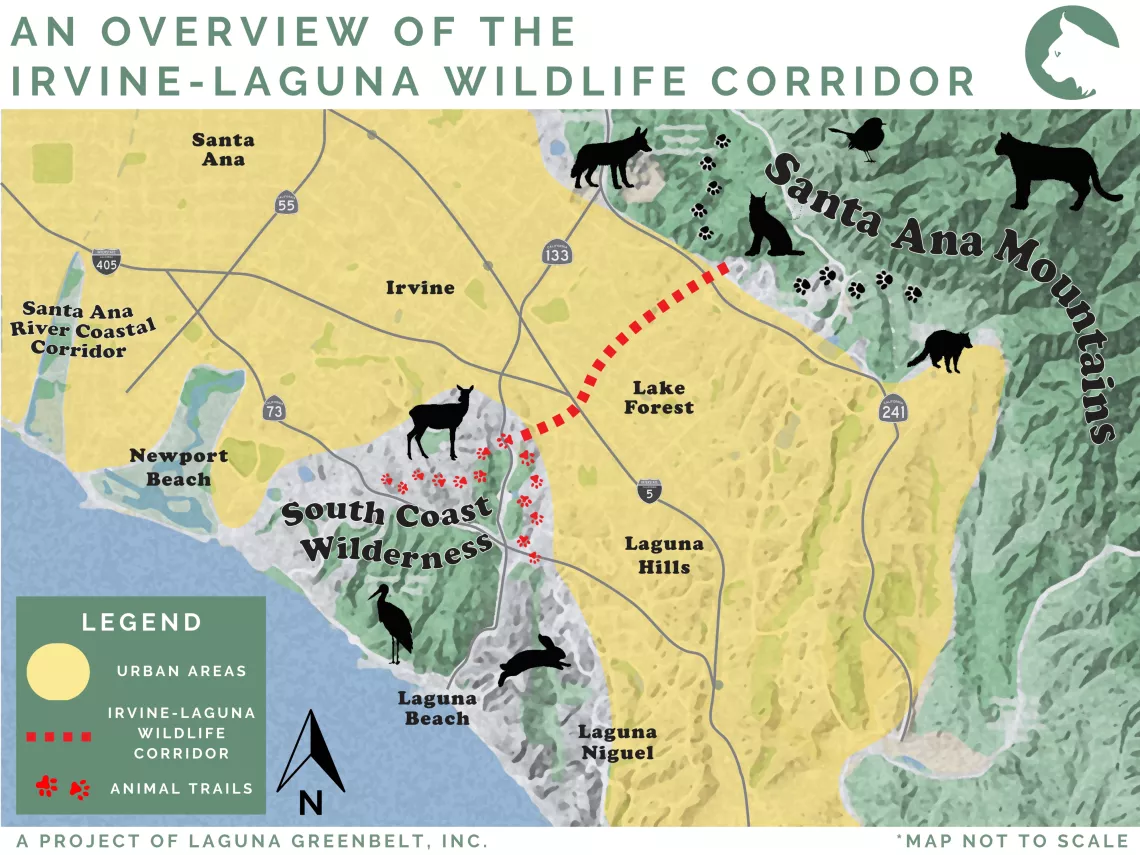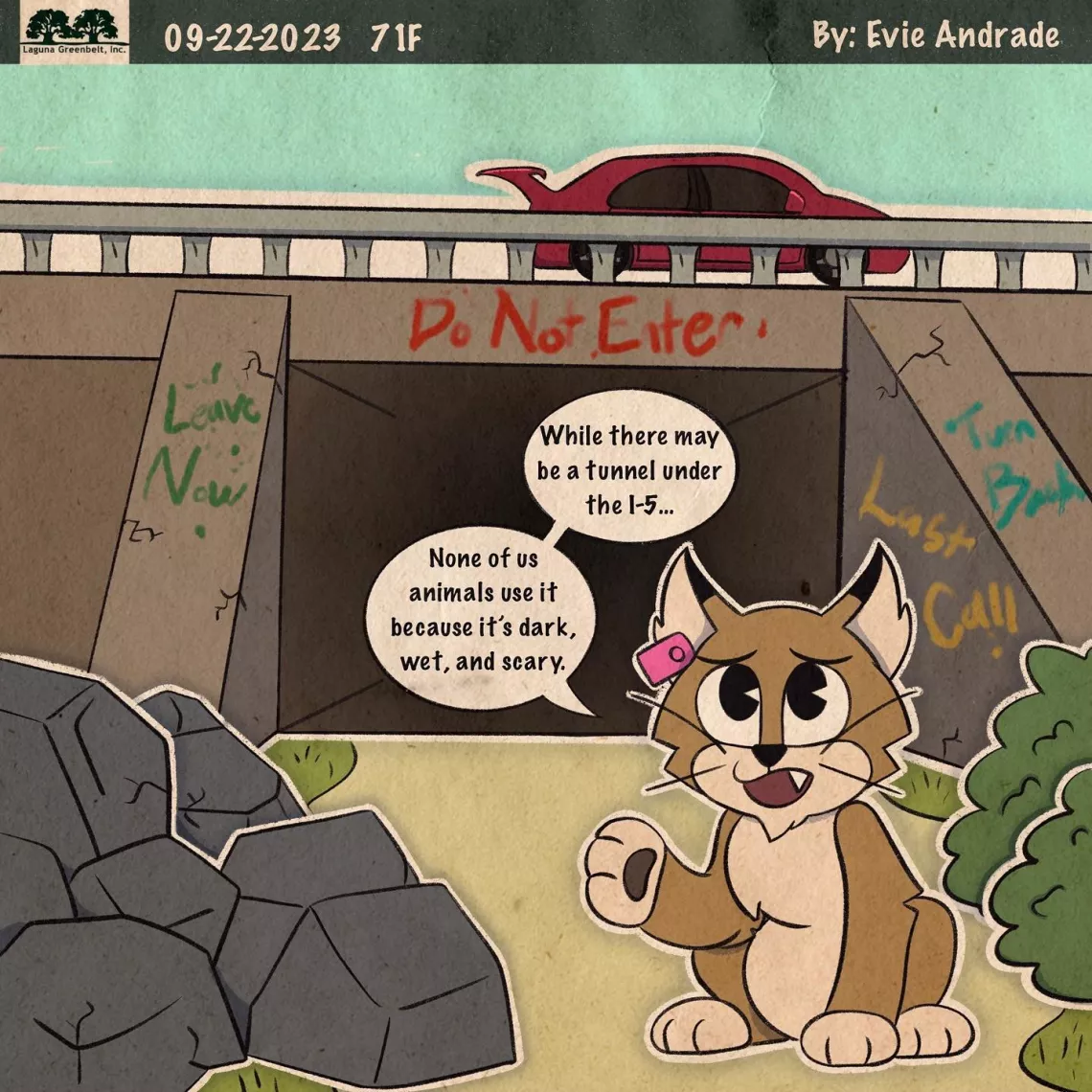Many south OC Sierra Club hikers have enjoyed the James Dilley Preserve, Laguna Coast, Whiting Ranch and other areas in the open spaces between coastal wilderness and the Cleveland National Forest. For the four-footed and winged inhabitants, there are obstacles to overcome in the wildlands that we humans enjoy so much. For the bobcat, coyote and two bird species – the California Gnatcatcher and the Least Bell’s Vireo – that are struggling to rebuild their populations, the Irvine-Laguna Wildlife Corridor is essential to genetic diversity and survival. Although the native mountain lion, grey fox and mule deer populations are less challenged, their roles represent predator and prey that are essential to a balanced ecosystem.
When genetic isolation leads to an unhealthy population, weakness and illness can take these animals’ populations to numbers that further threaten the species and disrupt the ecosystem. Federal wildlife biologists have found increasing rates of debilitating disease in coastal bobcats. Cactus wren populations along the Laguna coast have also become genetically isolated, leading to inbreeding and a low survival rate among nestlings. Wildlife connectivity infrastructure can diversify populations for breeding and meet their needs for habitats in which to hunt, find safe nesting, and raise their young. Unless they can find unrelated mates, these bird and animal populations will continue to suffer from debilitating diseases that can signal genetic weakness.

A wildlands corridor from coastal habitats connecting the Whiting Ranch wilderness parks and the much larger spaces which include the Santa Ana Mountains, and the Cleveland National Forest is the goal of a group of dedicated conservationists who have been working together for more than 2 decades. This link will allow both animals and plants to spread through a larger habitat once these wildlands are linked.
In order for the corridor to function effectively, “the corridor also needs to be properly buffered from development. Too much noise, light, and the intrusion of people and their pets will make wild animals and birds less likely to use the corridor.” (Source, Irvine-Laguna Wildlife Corridor)

The wild cats, deer and other natural inhabitants attempting to pass under the 1-5 freeway have challenged the City of Irvine, Five Point Holdings LLC, and experts in design and engineering. Although the corridor coalition is working to resolve these design challenges, there is one very long, dark and wet concrete pathway that hasn’t yet met the critters’ needs. This bottleneck for animal movement is also complicated by the highly urban nature of the area, making it the missing link that is still left to be resolved.
Sierra Club members and friends are welcome to participate in the Irvine-Laguna Wildlife Corridor by learning more, attending meetings and joining efforts that support wildlife movement. See our Cool Irvine Program summary by Ed Maurer and Patty Oh. On November 2nd, you could attend a virtual CAAP Stakeholder Roundtable where the City of Irvine will discuss its Climate Action and Adaption Plan. Within local cities’ general plan development, wildlife connectivity must be
part of the land use and green infrastructure needs for resilient climate
adaptation. You will have opportunities for learning, discussion and feedback on the proposed actions. Hope to see you there.
Linda Pauer